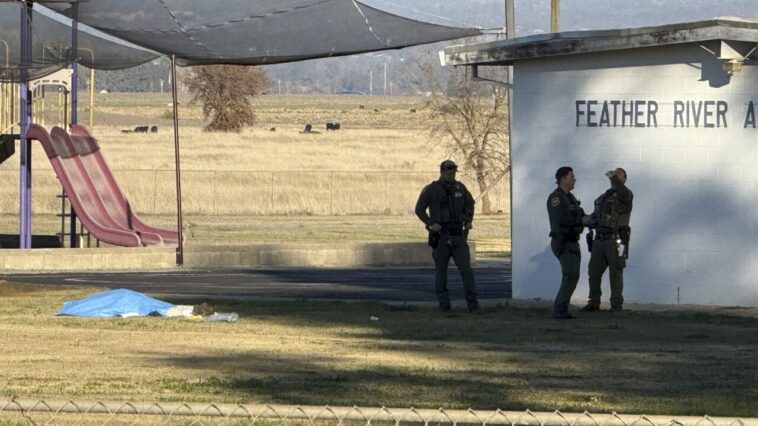
Understanding the Tragic California School Shooting: A Legal Perspective
Suspected Gunman’s Misleading ‘Ruse’ to Enter School
The peaceful ethos of a private religious institution, Feather River School of Seventh-Day Adventists in Oroville, Northern California, was shattered by bullets from a suspected gunman. Identified as 56-year-old Glenn Litton, the suspect is reported to have had a long criminal background intertwined with a history of mental illness. Using a fabricated story about wanting to admit his grandson to the school, Litton was able to gain access to the campus, a manipulative strategy raising questions about campus security measures across the nation.
The Violent Act: A Detailed Overview
The incident occurred around noon, when students were wrapping up their recess. A hail of gunfire critically injured two kindergarten boys, ages 5 and 6, disturbingly puncturing the youthful tranquillity. The 6-year-old suffered two gunshot wounds, causing internal injuries, while the 5-year-old was critically shot in the abdomen. Their resilience is indeed a miracle, but their road to recovery signals a significant obstacle strewn with inevitable pain and trauma.
The Shooter’s Background: A Troubling History of Mental Illness and Crime
According to Butte County Sheriff Kory Honea, Litton maliciously used the false pretense of prospective school admission to gain access to the school’s property. He had a history riddled with crimes ranging from theft to fraud, albeit no recorded violent crimes. Tragically, this oversight allowed the deviant to carry out his violent episode of horror, ending in his own suicide via a self-inflicted gunshot wound. Furthermore, his involvement with the Seventh Day Adventist Church uncovers potential for religiously motivated hatred or animosity; a disturbing characteristic seen all too often in such tragic events.
The Ramifications for School Safety
Recorded as one of 37 school shootings this year resulting in injuries or death, this incident is a stark reminder of the dire need to reassess school safety mechanisms across the country. A striking nationwide increase in campus shootings last year alone signals an alarming trend denying students, parents and educators the fundamental right to a safe learning environment.
Looking to the Future: Prevention is Better Than Reaction
The tragic incident does not merely highlight the shattered safety of students, but it reveals glaring gaps in our ability to respond to mental illness and potential threats proactively. For instance, Litton’s long-standing history of mental illness, evident since the age of 16, calls into question our ability, as a society, to provide appropriate mental health care assistance. Moreover, Litton’s criminal history, spanning theft, forgery, and fraud, did not mark him as a potential violent threat, bringing into question the sufficiency of existing law enforcement assessment tools and strategies.
Conclusion
While it is our collective hope these tragedies never occur, being prepared is essential. This event magnifies the value of comprehensive mental health care, stringent campus security measures, and adept threat assessment tools. Rooting out potential threats actively and investing in holistic mental health management can potentially save innocent lives in the future. Ultimately, every child deserves a safe space to learn, grow, and blossom into their potential, free from the dread of violence.
Originally Post From https://www.usatoday.com/story/news/nation/2024/12/05/california-private-school-shooting-suspect-identified/76809762007/
Read more about this topic at
School Shootings: Horrific but Statistically Rare
PROTECTING AMERICA’S SCHOOLS A U.S. …


